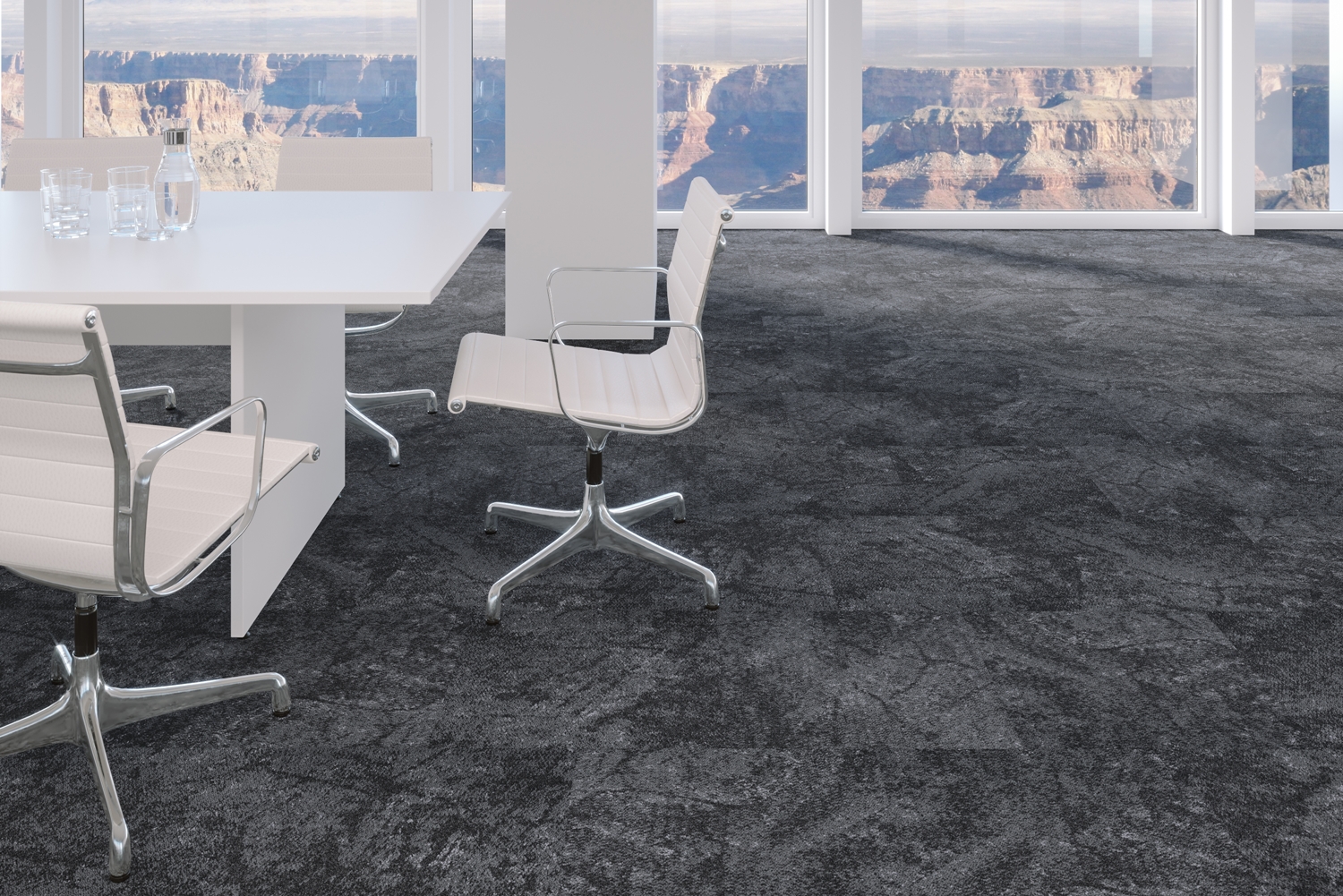
November, 2019
Biomimicry has been a design approach used in workplaces since the late 1990s, though its origins lie in much earlier decades. The art of mimicking colours and textures from the natural environment satisfies an innate human yearning to be close to nature.
Biomimetic office design aims to create a harmonious workspace by taking inspiration from natural forms and structures. Organic patterning is a classic element of biomimicry and its influences can be seen in the likes of Freedom Bark flooring.
Organic forms and colours evoke our primal longing for the outdoors. We know that flooring plays an important role in office design. Our first interactions with a space are, after all, visual ones and the floor takes up an awful lot of that space.
The finish underfoot interplays with our subconscious and impacts on how we interact with our surroundings. Bringing biomimetic influences into workplace floorings can, therefore, prove to be beneficial for office harmony, productivity and our ability to feel content in our indoor environments.
The outdoors meets the indoors
The fundamentals of biomimicry take us right back to our school days. Remember those biology lessons in which we were told that form follows function? The rule follows that elements in the natural world look the way they do for good reasons, simply in order to do what it is that they are ultimately designed to do. Animals and organic living things have evolved to fit the habitat in which they live.
Are we overlooking the power of Mother Nature?
Floors have to be practical and hard-wearing after all. But is there a tendency to think function over form and overlook the appearance of the layout and how we interact with it?
Indeed, when it comes to flooring, we often find workplaces with single-colour carpets in a neutral, inoffensive tone or simple patterns. Designing carpet tiles that mimic the apparent randomness of natural objects could help meet our need to be close to nature while also saving on time and expense. When patterned carpet tiles have no repeating pattern, they can simply be replaced by another with an equally random design on it. There is also a saving on installation time and wastage.
The random beauty of a forest floor is perhaps one of the most peaceful and aesthetically pleasing surfaces on earth. Mimicking subtle elements of the earth and sky makes a lot of sense, and in some small way enables us to reconnect our sense with the natural world.